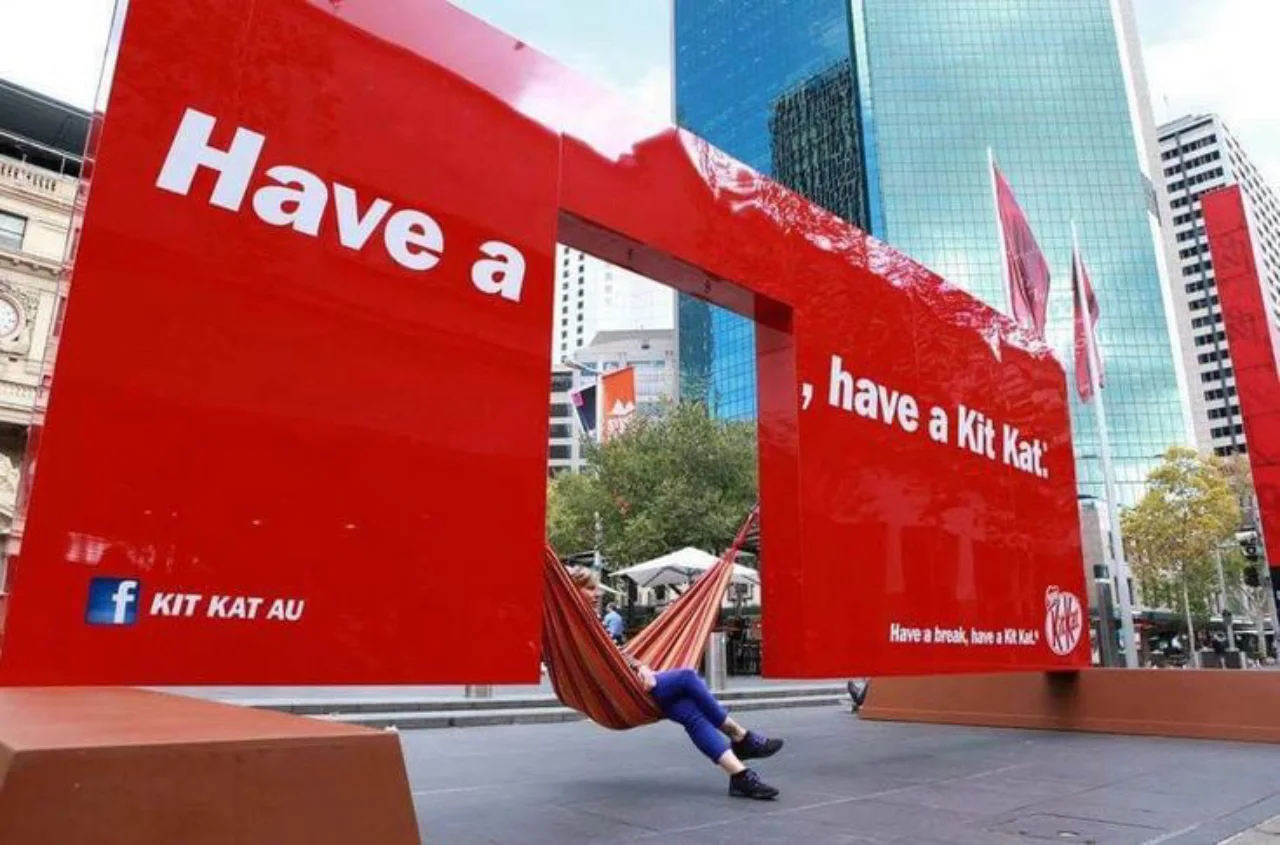The startup’s biggest challenge? No one knows you exist. You’ve built a great product, but you don’t have a huge ad budget. Traditional marketing advice feels completely out of reach. But what if brand awareness isn’t about spending millions? What if it’s about creativity and connecting with people?
This guide is for the underdog—the startup with a small team and a big vision. We’ll show you five high-impact, low-cost strategies to build a powerful brand identity and a loyal following from scratch.
The Mindset Shift: From Mass Marketing to Niche Authority
First, you need a new approach. The old way was like fishing with a giant net in the open ocean. It’s expensive, and you’re competing with massive fleets. For a startup, that’s a losing game.
The new way is more like spear-fishing in a small, well-defined pond. This is the principle of Niche Authority. You don’t need to appeal to everyone. You just need to become the go-to brand for a very specific group.
Instead of being the next Amazon, be the essential brand for home coffee lovers. Instead of rivaling Nike, become the must-have gear for trail runners who care about sustainability.
Once you find your micro-niche, your efforts to build brand awareness become incredibly effective. You can build a Community around this niche. This involves creating a space where your audience can interact. Think a private Facebook group, a dedicated subreddit, or a Discord server.
By fostering a sense of belonging, you turn casual customers into passionate advocates. They will champion your brand for you. This builds a deep loyalty that a 30-second ad could never achieve.
5 Strategies to Build Brand Awareness
1. Leveraging Micro-Influencers

When you hear “influencer marketing,” you might think of celebrities promoting products or services. But for startups, the real value is with micro-influencers. These are individuals with 1,000 to 100,000 followers. Their reach is smaller, but their engagement is much higher. In fact, research shows that micro-influencers can generate up to 60% more engagement than celebrity influencers. Tapping into this trusted network is a powerful way to get your brand in front of a highly targeted audience without breaking the bank.
Actionable Steps
- Find Your Niche Influencers: Don’t just search for “fashion influencers.” Be specific. Use social media to search for hashtags like #sustainablefashion or #coffeelover. You can use tools like HypeAuditor or Upfluence to find creators in your niche. Look for those who consistently post about your industry and have a highly engaged audience. Pay attention to their comment-to-like ratio to gauge genuine interaction, not just follower count.
- Don’t Just Pay, Partner: Reach out with a personalized message. Instead of a large fee, propose a partnership that aligns their success with your own. This could mean offering a small affiliate commission on sales or a custom discount code for their followers. This approach is more authentic and makes them a genuine partner, not just a paid advertiser.
- Empower Their Creativity: Give them the freedom to create content that feels natural to their own brand. A genuine recommendation from a trusted voice is far more powerful than a scripted ad. For instance, if you sell artisanal coffee, send a micro-influencer your product and ask them to share their honest morning coffee routine using your brand. This strategy builds deep trust.
2. The Art of the Strategic Partnership
 Partnerships are a classic, low-cost tool for startups. By collaborating with another business, you can tap into their existing customer base at virtually no cost. Find a partner who shares your target audience but isn’t a direct competitor. This creates a mutually beneficial relationship where both brands gain exposure and credibility by association.
Partnerships are a classic, low-cost tool for startups. By collaborating with another business, you can tap into their existing customer base at virtually no cost. Find a partner who shares your target audience but isn’t a direct competitor. This creates a mutually beneficial relationship where both brands gain exposure and credibility by association.
Actionable Steps
- Identify Ideal Partners: Think about who serves your customer before or after you do. For example, a local gym could partner with a healthy meal prep service. Or a unique stationery brand could team up with an online course provider for students. Look for businesses that have a similar mission or values to your own.
- Craft a Mutual Benefit: The partnership must be a win-win. You could run a joint social media contest where followers must follow both brands to enter. Or you could co-host a free webinar where both companies share expertise. A bundled product offering (e.g., your product plus theirs at a discounted price) is another great way to cross-promote.
3. The Referral and Loyalty Program

Word-of-mouth is the most powerful form of brand awareness. A good referral program formalizes this process. It turns your most loyal customers into your most effective sales team by giving them a clear reason and incentive to share your brand with their friends and family. This strategy leverages the trust you’ve already built to attract new, highly qualified customers. In fact, 83% of consumers trust recommendations from friends and family more than any form of advertising.
Actionable Steps
- Keep it Simple: The program must be easy to understand and use. A common and highly effective model is a two-sided incentive: “Give your friends 10% off their first order, and you’ll get $10 in store credit.” This rewards both the person who refers and the new customer, making it a compelling offer for both.
- Promote the Program: Don’t just bury the program on your website. Promote it actively in your email newsletters, on your social media channels, and in post-purchase confirmation emails. Remind your customers that they can get rewards for sharing.
- Use Tools: Platforms like ReferralCandy or Friendbuy can automate the entire process for you. These tools track referrals and automatically issue rewards, so you don’t have to manually manage a complex system. This makes the program scalable.
4. Content Marketing as a Superpower

For a startup, content marketing is a necessity. High-value content establishes you as a thought leader and organically draws in an audience searching for solutions to their problems. By consistently creating helpful articles, videos, or guides, you build trust and become a valuable resource in your industry, which in turn drives people back to your brand. Did you know that companies with a blog generate 68% more leads per month than those without?
Actionable Steps
- Solve Problems, Don’t Just Sell: Your blog posts and videos should answer the questions your target audience is typing into Google. If you sell sustainable camping gear, create a “Guide to Eco-Friendly Backpacking.” If you sell social media tools, write about “5 Free Marketing Templates.” By providing value first, you build trust and become a resource.
- Prioritize Shareable Formats: Not all content is created equal. Videos, infographics, and listicles are highly shareable formats that can go viral and extend your reach far beyond your current following. Consider creating a short, animated video explaining a complex problem, or an infographic that visually represents data relevant to your niche.
- Master One Channel: Don’t try to be everywhere at once. Focus on one or two channels where your audience spends the most time. If they’re on TikTok, master short-form video. If they’re on LinkedIn, become a thought leader through articles and long-form posts. This focus ensures you become a known presence in your niche.
5. Guerrilla Marketing

Guerrilla marketing is all about creativity and surprise. It generates buzz with minimal financial investment by using unconventional tactics to grab attention and get people talking. The goal is to get so much free publicity that it generates incredible brand awareness far beyond what you could have paid for with traditional advertising. It’s about being clever and unexpected to cut through the noise.
Actionable Steps
- Find Your “Wow” Factor: Think about your brand’s unique personality and your audience’s biggest frustrations. What kind of stunt, installation, or performance would be so unexpected and so aligned with your message that people have to share it?
- Use Humor and Authenticity: Don’t try to be something you’re not. Dollar Shave Club’s success came from its honest, funny, and self-aware approach. They mocked the expensive, serious tone of their competitors. Ask yourself: What is the “elephant in the room” in your industry? Can you address it with humor and transparency?
- Leverage Existing Environments: You don’t need to build a new stage. Instead, use what’s already there. Blendtec used the existing perception of a blender as a kitchen appliance and completely subverted it by blending iPhones. Think about everyday objects or public spaces you can creatively repurpose to get your message across.
Brand Awareness Strategies That Worked in Real Life
Sometimes, the best way to understand these strategies is to see them in action. Here are two examples of brands that built powerful brand awareness from the ground up, proving that creativity and community can beat big budgets every time.
Beardbrand: From YouTube Channel to Global Brand
Beardbrand began as a simple YouTube channel sharing beard care tips. It didn’t start with a product; it started with a community. By providing consistent, high-value content, the founder established himself as an authority in the niche. This organic growth allowed the brand to later launch a product line to an already engaged and trusting audience. They then formalized their word-of-mouth efforts with a simple two-sided referral program that rewarded both the referrer and the new customer with store credit. By encouraging customers to share their beard journeys, Beardbrand turned its loyal community into an expanding sales force, proving that content and community can be your most powerful marketing engine.
Mouth: The Indie Foodie Brand
Mouth, an online marketplace for indie food and spirits, built a strong following by focusing on niche authority and a highly curated experience. Instead of trying to sell everything, they became the go-to destination for artisanal goods from small-batch makers. The brand’s content celebrates these creators with in-depth stories, behind-the-scenes videos, and beautifully shot product features. Mouth also leaned heavily on strategic partnerships, creating gift boxes with other indie brands and food bloggers to cross-promote to a shared foodie audience. Their success shows how a highly focused, authentic approach can create a powerful brand without relying on mainstream ads.
Conclusion: Small Budgets, Big Ideas
Building a brand is not about the size of your wallet. It’s about the scale of your ideas. The most enduring brands in the world started as small businesses with a compelling story.
By shifting your mindset and leveraging these five budget-friendly strategies, you can build a powerful brand identity that resonates with your audience and stands the test of time. Your story is your most powerful asset. It’s free, it’s authentic, and it’s what people will remember.
Remember to measure your success. Track your community growth, referral program engagement, and content reach to ensure your creative efforts are leading to real results.

